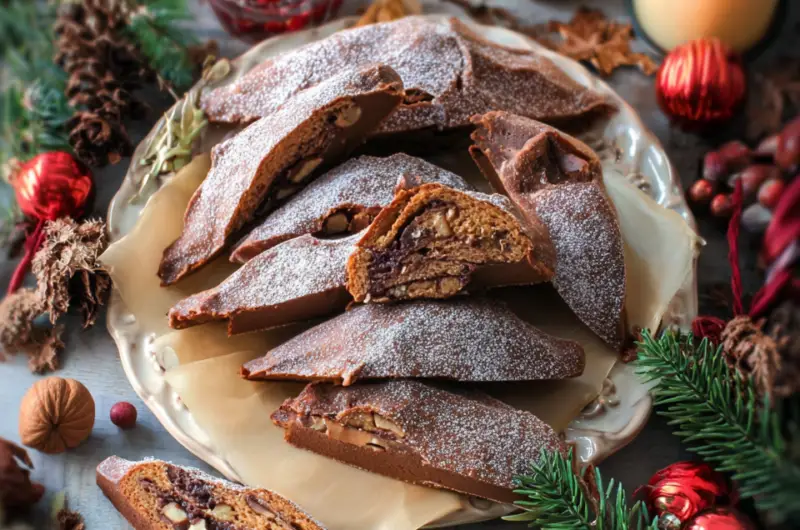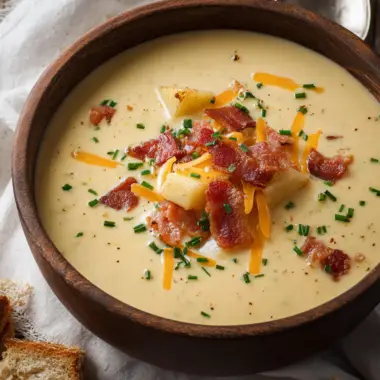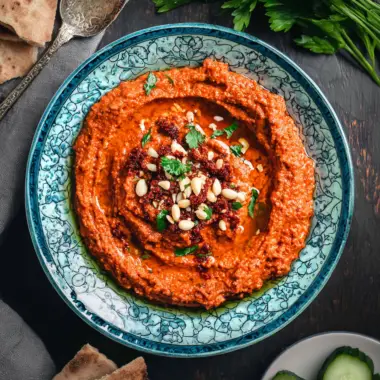The comforting aroma of spices and honey fills the kitchen as you bake these traditional German Magenbrot cookies. With a rich history rooted in festive markets and cozy winter evenings, Magenbrot is a beloved holiday classic that blends cocoa, cinnamon, nutmeg, and cloves into a tender, cake-like cookie. The addition of candied orange peel adds a citrusy brightness that balances the warm spices perfectly. These cookies are lightly glazed while still warm, creating a crackled, sugary finish that adds just the right amount of sweetness. Magenbrot is the perfect companion to a hot drink on a chilly day and a beautiful addition to any holiday cookie platter. Whether you’re introducing them to your family for the first time or reliving memories of German Christmases past, Magenbrot brings a unique and nostalgic flavor to the season.
Full Recipe:
Ingredients:
-
3 cups all-purpose flour
-
1 teaspoon baking soda
-
1 tablespoon cocoa powder
-
1 teaspoon ground cinnamon
-
1/2 teaspoon ground cloves
-
1/2 teaspoon ground allspice
-
1/4 teaspoon ground nutmeg
-
1/2 teaspoon salt
-
1/2 cup honey
-
1/2 cup sugar
-
1/4 cup water
-
2 tablespoons unsalted butter
-
1 teaspoon vanilla extract
-
1/2 cup chopped candied orange peel
-
1 cup powdered sugar
-
1/4 cup water (for glaze)
Directions:
-
In a large mixing bowl, combine flour, baking soda, cocoa powder, cinnamon, cloves, allspice, nutmeg, and salt.
-
In a saucepan, bring honey, sugar, water, and butter to a gentle boil. Stir constantly until the sugar has dissolved completely. Remove from heat.
-
Stir vanilla extract into the warm honey mixture. Gradually pour into the dry ingredients, mixing until a dough forms.
-
Fold in the chopped candied orange peel. Cover and let the dough rest for at least 2 hours or overnight for deeper flavor.
-
Preheat oven to 350°F (175°C). Line a baking sheet with parchment paper.
-
Roll the dough into logs about 1 inch thick, then flatten slightly. Bake for 15–18 minutes, until firm but not dry.
-
While the cookies are baking, prepare the glaze by combining powdered sugar and water until smooth.
-
While still warm, brush the cookies generously with the glaze. Let cool completely, allowing the glaze to set.
Prep Time: 15 minutes | Cooking Time: 18 minutes | Total Time: 33 minutes
Kcal: 150 kcal per piece (approx.) | Servings: 24 cookies
The Tradition Behind Magenbrot: Germany’s Cozy Christmas Cookie
Magenbrot, a beloved spiced cookie from Germany, is a treat deeply tied to the festive spirit of European Christmas markets and traditional holiday baking. Its name directly translates to “stomach bread,” an odd but charming term that references its soothing blend of warm spices thought to aid digestion. Often found in alpine holiday markets nestled between stalls of mulled wine and roasted nuts, Magenbrot is more than just a cookie it’s a cultural experience wrapped in nostalgia and spice.
Soft, aromatic, and lightly glazed, Magenbrot closely resembles a cross between gingerbread and spice cake. Unlike crisp cookies, Magenbrot offers a tender, almost cake-like texture, making it a comforting addition to a holiday dessert spread. The spice profile includes cinnamon, cloves, nutmeg, and sometimes cardamom, all of which create a warming effect perfect for cold winter months. The addition of honey and cocoa powder deepens the flavor and color, while a finishing glaze adds sweetness and a delightful, crackled sheen.
Whether you’re familiar with German baking traditions or are looking to expand your cookie repertoire, Magenbrot is a delightful and unique holiday treat that brings the Old World to your modern kitchen.
Historical Roots of Magenbrot
The history of Magenbrot dates back several centuries and finds its roots in German-speaking regions of Europe, particularly in Germany and Switzerland. Traditionally sold at Christmas markets (Weihnachtsmärkte) and fairs, these cookies were cherished both for their flavor and their purported digestive benefits hence the name. “Magen” means stomach, and “brot” means bread, reflecting both their medicinal origin and their loaf-like form when sliced.
Originally, these cookies were made with ingredients thought to be beneficial to health, such as cloves, cinnamon, and anise. These spices were considered luxury items in medieval Europe, often reserved for the wealthy or for special occasions. Their inclusion in Magenbrot made the cookies not only delicious but also symbolic of prosperity and festivity.
Over time, as the use of spices became more common and affordable, Magenbrot evolved from a medicinal treat into a beloved holiday dessert. It is now a staple at holiday events, especially in regions like Bavaria and Zurich, where Christmas markets are famous for their food and handcrafted goods.
What Makes Magenbrot Unique?
What sets Magenbrot apart from other holiday cookies is its texture and flavor profile. While most cookies aim for crispness or chewiness, Magenbrot offers a soft, cake-like bite. The dough is enriched with honey, which not only sweetens but also helps retain moisture, contributing to the cookie’s tender interior. Cocoa powder gives it a rich brown color and a subtle chocolate undertone, which is balanced by the brightness of candied citrus peel, often orange.
The real charm lies in the spicing. Cinnamon and cloves provide the classic Christmas aroma, while nutmeg and allspice add complexity. Depending on the recipe, additional spices like cardamom or even black pepper can be used to enhance the warm, slightly piquant flavor.
After baking, Magenbrot is traditionally brushed with a sugar glaze while still warm. This creates a thin, glossy coating that hardens as it cools, locking in moisture and adding a delightful sweetness to each bite. The contrast between the soft interior and the sugary crust makes every piece irresistibly satisfying.
Serving Suggestions and Pairings
Magenbrot is incredibly versatile when it comes to serving. Traditionally, it is enjoyed with a hot beverage coffee, tea, or Glühwein (mulled wine) making it an ideal afternoon or evening treat during the colder months. The bold spices complement warm drinks beautifully and help create a cozy, comforting experience.
For a more elaborate presentation, Magenbrot can be served as part of a holiday dessert platter alongside other European treats like Lebkuchen, Pfeffernüsse, and Vanillekipferl. Pair it with a fruit compote or whipped cream for a plated dessert, or serve it as finger food at holiday parties.
Magenbrot also makes an excellent homemade gift. Packaged in decorative tins or clear cellophane bags tied with ribbon, these cookies travel well and stay fresh for several days, thanks to their glaze and spice content. They are perfect for sharing with friends, coworkers, and neighbors during the holiday season.
Making Magenbrot at Home
Although Magenbrot has a rich and storied past, making it at home is surprisingly straightforward. Most recipes call for basic pantry staples like flour, sugar, butter, and common baking spices. The dough comes together quickly and requires only a short resting period before baking.
One of the reasons Magenbrot is so well-loved in home kitchens is its forgiving nature. The dough doesn’t require shaping with cookie cutters or precision decorating, making it approachable for bakers of all skill levels. Typically, the dough is rolled into logs, baked, and then sliced into oblong pieces before glazing.
Some modern variations incorporate chopped nuts, extra citrus zest, or even a drizzle of dark chocolate for added indulgence. Vegan versions can also be made by substituting plant-based butter and omitting honey or using maple syrup instead. This adaptability makes Magenbrot not just a nostalgic treat but a practical and customizable one for contemporary bakers.
Cultural Significance and Holiday Joy
In German-speaking households, baking Magenbrot is often a cherished holiday tradition passed down through generations. It’s a recipe that brings families together in the kitchen and evokes memories of bustling markets, twinkling lights, and the magical anticipation of Christmas.
Its presence in Christmas markets is almost iconic. The sweet, spiced aroma of freshly baked Magenbrot wafting through the air is synonymous with European holiday festivities. Shoppers often warm their hands with a paper bag full of these tender treats while sipping on hot mulled wine. That association makes the cookie more than just a food it’s a sensory symbol of holiday joy, warmth, and community.
Conclusion:
Magenbrot is a cookie with history, heart, and soul. Its gentle spice blend, tender texture, and glossy glaze make it a standout addition to any holiday dessert table. It embodies the warmth of tradition, the coziness of winter gatherings, and the joy of giving something homemade.
Whether you are exploring international holiday treats or simply searching for a spiced cookie with a twist, Magenbrot offers something special. It bridges the gap between cake and cookie, simplicity and elegance, past and present. Once you bake it, chances are it will become a new seasonal staple in your home, evoking the charm of Christmas markets and the timeless pleasure of festive baking.








